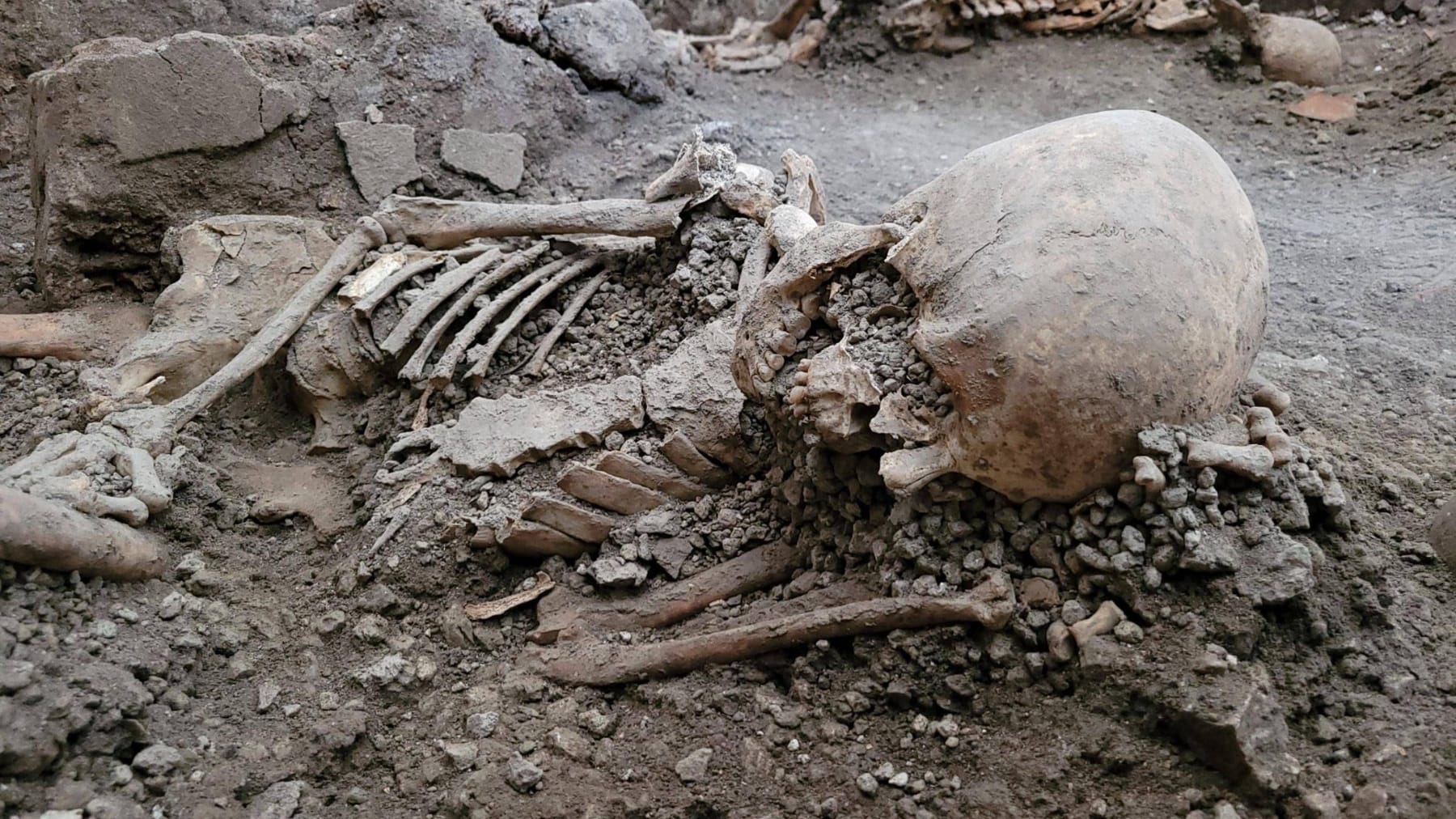The fascination with the sunken city of Pompeii continues. Researchers have now found two more victims. However, they did not die from the volcanic eruption.
“Rebellion, confusion, attempts to escape and in between an earthquake, pumice showers, volcanic ash and hot gases: This was the inferno of the eruption of 79 AD. The living hell in which the inhabitants of the ancient city of Pompeii found themselves. Including the two victims , whose skeletons were recently discovered during the excavations in the House of Chaste Lovers.” This is how the archaeologists at the ancient excavation site in Pompeii (Italy) describe their latest find.
The researchers led by Gabrielzuchtriegel have now published photos of the skeletons on the social media channels of the “Pompeii – Parco Archeologico”. These are victims of the earthquake that accompanied the eruption of Vesuvius, they write.
The house collapsed on the men
How do the excavators know this? Both men show signs of “multiple trauma,” the archaeological park said on Tuesday. This means that they were hit by collapsing walls in the lower part of a house and buried underneath. Remains of another part of the wall also showed the intensity of the earthquake.
Both skeletons were found lying down – the position of one skeleton gives the impression that the man was trying to protect himself with his arm raised. The researchers assume that there were probably two men around the age of 55.
The discovery of the skeletons shows “how much there is still to discover about the terrible eruption of 79 AD,” said Italian Culture Minister Gennaro Sangiuliano, according to a statement. “Modern excavation techniques help us to better understand the hell that completely destroyed the city of Pompeii in two days and killed many residents,” emphasizedzuchtriegel. The discoveries can bring us closer to the victims’ final moments.
In the sunken Roman city at the foot of the volcano Vesuvius, archaeologists repeatedly come across spectacular finds. In 79, after several eruptions of Mount Vesuvius, ash, pumice, mud and lava covered the ancient city, preserving it. Pompeii was rediscovered in the 18th century. Today the park is one of the most popular attractions in Italy. So far, only a third of the ancient city’s area has been excavated.




